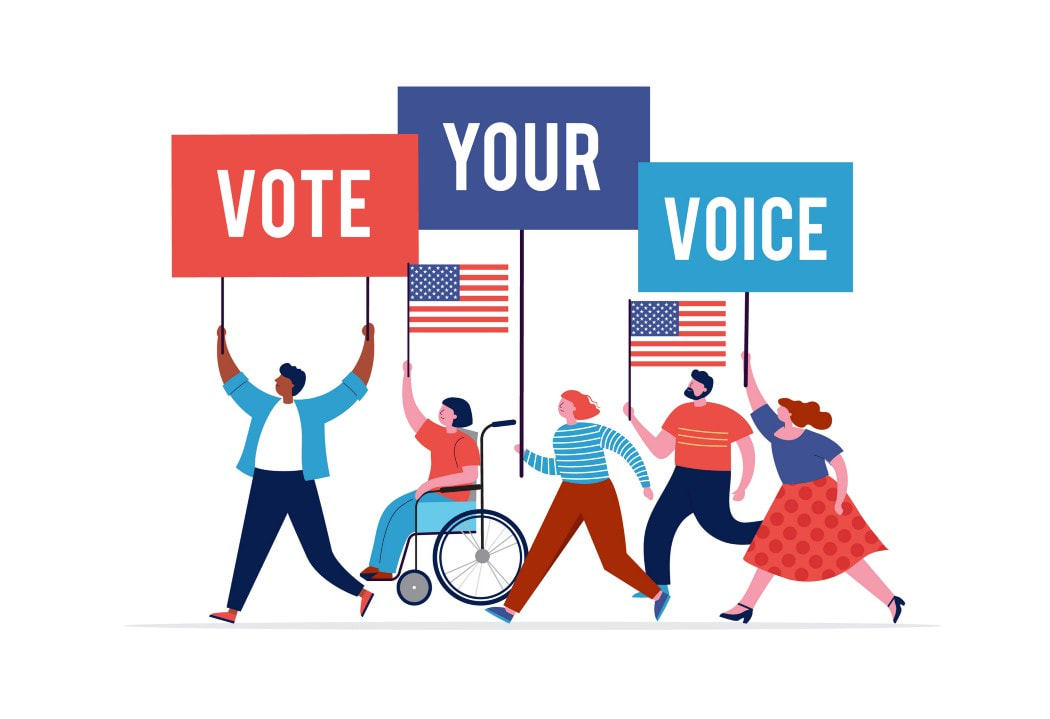 Agencies like Sample Supports partner with the Colorado Department of Vocational Rehabilitation (DVR) and your local Community Center Board (CCB) to help individuals living with intellectual and developmental disabilities prepare for, obtain, and maintain meaningful community integrated employment. Let’s learn more about the process and how to secure a competitive and integrated employment position in the community. How to Get Started An individual's employment journey often starts with working with their local DVR to identify their employment goals and identify a local agency/vendor they would like to work for vocational support. Individuals and their support teams must complete an application with their local county DVR office. You can find your local DVR location and information at https://dvr.colorado.gov/about-us/contact-us. DVR counselors and staff will assist you in the following:
If you work with your local Community Center Board (CCB), your case manager can also connect with Supported Employment teams, like the one at Sample Supports, to get you started! There is an individualized referral process that focuses on each person’s strengths and abilities. Agencies like Sample Supports then create customized employment plans to secure a meaningful job opportunity for each individual. I selected an employment agency. Now what? Once you start working with your Employment team, your local Job Development Coordinator will begin assisting you in finding employment and reaching your employment goals! As part of the job development process your Job Developer will:
Following the pre-employment process, your job developer will assist you in applying, interviewing and starting an employment opportunity specific to your employment goal. Our Job Developers have many community connections and partnerships to help assist you in finding individualized and meaningful employment! Your Job Development Coordinator will assist you in your job onboarding process. They will help gather all the uniforms and supplies you may need and assist in communication with your new employer as needed. What if I need extra help to be successful at work? Job coaching is available! Every individual’s needs are unique when it comes to meaningful employment. Sample Supports can provide individualized job coaching to assist individuals in building their skills and increase their independence in their employment opportunities. Our Employment team will work with all individuals to develop Job Coach Fading Plans aimed at identifying strengths of each person and goals to increase independence and job skills, while fading job coaching. A job coaches role is to help you learn and perform your job duties. They work 1:1 with you in your place of employment to ensure job stability. Job coaches help with skill development including:
Your team will work together to fade job coaching as appropriate for your individualized needs. Establishing Job Stability Employment Managers, Job Developers, and Job Coaches will continue to work long term with individuals and their employers to ensure job stability. Our team will check in with employers regularly and offer assistance as needed for any issues that may arise. We individualize support to ensure each individual is supported in their long term, meaningful employment. We will work together to find every individual meaningful and stable employment! Learn more about our Supported Employment Program here!
0 Comments
Disability Services in Colorado
While it is not perfect, Colorado has a strong support system for individuals with intellectual and developmental disabilities (IDD). In reviewing other state’s regulations and billing rates, you can see that our state holds value in ensuring individuals with IDD have a high quality of life equal to anyone else living in the community. Accessing those services, however, can be a large puzzle where families or individuals independently get stuck and turned in the wrong direction. We wanted to share easy to follow steps on how to get started to ensure that you or someone close to you is able to access the care they need. Here is how it works:
Currently, one of the most important tools within Colorado’s IDD system is the Supports Intensity Scale (SIS) Assessment. We say this because the state is working to replace this system in the future. The SIS is an assessment that occurs before you begin services and is aimed to identify the level of support you need. Accurate information is critical here. As a family member or close connection to an individual seeking services, you have to step back and think ‘what would these various life skills look like if I were out of the picture?’ Your goal is to show the level of support the individual needs to be successful. The SIS assessment is then utilized to identify the reimbursement rates for providers AND the amount of services an individual qualified for. This is never an easy meeting and is extremely personal. It is important to discuss this with the individual receiving services beforehand to ensure they understand this may be uncomfortable but it is critical to be honest. Sample Supports offers a step-by-step list of how to get enrolled in services — click here — or give us a call if you need support! With the state of 2020, creating and adapting to new ways of supporting and providing services to individuals in our services, we are bringing together the social and political pieces through education, support, and psychosocial support.
The IDD population often is one that is underserved or under heard when it comes to the Right to Vote. Individuals with disabilities often need support or guidance with finding and reviewing resources for political understanding and personal growth around candidates’ agenda points. We are providing neutral guidance and support ensuring every individual in our care has the ability to access relevant resources, candidates, and general outlining themes related to each candidate’s agenda. As most of us Vote for the candidate we feel will better our society, social economic crisis, social/emotional supports, and overarching global trends, we also want to ensure our individuals have the opportunity to review the same information in a way that is consistent with their preferred communication and comprehension styles. ALL of us have not only the right to Vote, but the right to know WHAT we are Voting for. We have taken on the following model to support in implementing this in our Residential and Supported Living Services (SLS) programs, with that goal that 100% of individuals will be registered and engaged in voting for the November 3rd election.
Additional Resources to Vote in 2020
 What is a behavior? We hear the term behavior used all of the time in the disability community, but what does that truly mean? We break down the meaning of behavior and how that fits within the common therapeutic models, like Applied Behavioral Analysis, that you see often when you get started in learning about behavioral intervention. A behavior is defined as an action or skill needed to interact with the environment. Think about any action or skill that you may need to communicate with the world around you — that is a behavior! The term behavior is often used with a negative connotation, but removing that association can be helpful as you are working through the process of defining what behavior means. A few examples of behaviors are:
The list goes on! Any action we engage in can be defined as a behavior. All behaviors typically have an appropriate environment in which they are preferred to occur. For example, speaking at a high volume is totally okay at a sports arena, but less preferred in a classroom or group setting. When assessing behaviors, we start with reviewing if they are occurring in a way that is more or less preferred. Less preferred behaviors occurring in an inappropriate environment usually lead to individuals and families to seek support in learning how to adapt and cope with those behaviors. Are behaviors positive or negative? There are not many truly negative behaviors, but simply less preferred behaviors occurring in an inappropriate environment. When thinking of behaviors that typically interfere with an individual’s ability to function in their environment, we often think of physical aggression like hitting or destroying property or verbal aggression like yelling or making hurtful comments. When framing these behaviors in an inappropriate environment, individuals may be limited in their ability to access that environment successfully as it can cause a risk to themselves or others. Through the basis of behavioral intervention, we break down the behaviors an individual is experiencing, if the behavior is occurring in an appropriate or inappropriate environment, and what the behavior is seeking to communicate or access. For example, punching a pillow in your room when you are feeling frustrated is a less preferred behavior occurring in an appropriate environment. The risk of harm to yourself or others is low and you are working through an expression of an emotion that you may not be able to explain. If you were to take the behavior of punching and place it in an inappropriate environment, say in the classroom or group setting, you are now facing a behavior that is inappropriate for the setting as it can lead to harm to yourself or others. Once we identify the behaviors, it is all about discovering what the behavior is trying to communicate as well as what the desired outcome of the behavior is so we can work on replacing it with appropriate behaviors for the given environment. What causes and reinforces behaviors? Behaviors are a form of communication in which an individual is typically attempting to gain some level of reinforcement. Reinforcement can be access to a preferred item and activity or social interaction and attention. Remember that there are rarely negative behaviors. Oftentimes the individuals we serve engage in a behavior as it is an effective way for them to meet their needs as they are unable to do otherwise. Imagine being unable to verbally communicate if you were feeling sad, mad, or hurt. You would adapt your behavior to find a way to express yourself to get the help you needed and sometimes that leads to big expressions of emotion that may be commonly referred to as negative or challenging behaviors. Our goal in behavioral intervention is to reestablish the reinforcements of behavior to support more preferred behaviors in the appropriate environment to occur more frequently. How does this fit within the context of behavior intervention? Behavioral intervention serves to develop a stopgap to challenging behaviors occurring in inappropriate environments by building the individual’s toolbox of coping skills and alternative behaviors to meet their needs instead of accessing the challenging behavior. Increasing the use of coping skills and more preferred behaviors in place of less preferred behaviors typically allow for individuals to have more successful interactions with those around them and their communities. This process takes time and there is no immediate solution to decreasing challenging behaviors, however consistency in positive reinforcement is a powerful tool that we harness as clinicians to support the individuals we serve in adapting their behavior in a way that serves them more successfully. Learn more about Behavior Services and where we can help. |
Categories
All
Archives
July 2024
|
We Provide Services 24/7
Administrative Office Hours:
Monday - Friday
8:00 am - 5:00 pm
Phone: 720.684.6102
[email protected]
Fax: 303.261.8216
Mailing Address:
606 Mountain View Ave.
Longmont, CO 80501
Click to set custom HTML
© 2023 All RIGHTS RESERVED PRIVACY POLICY



 RSS Feed
RSS Feed